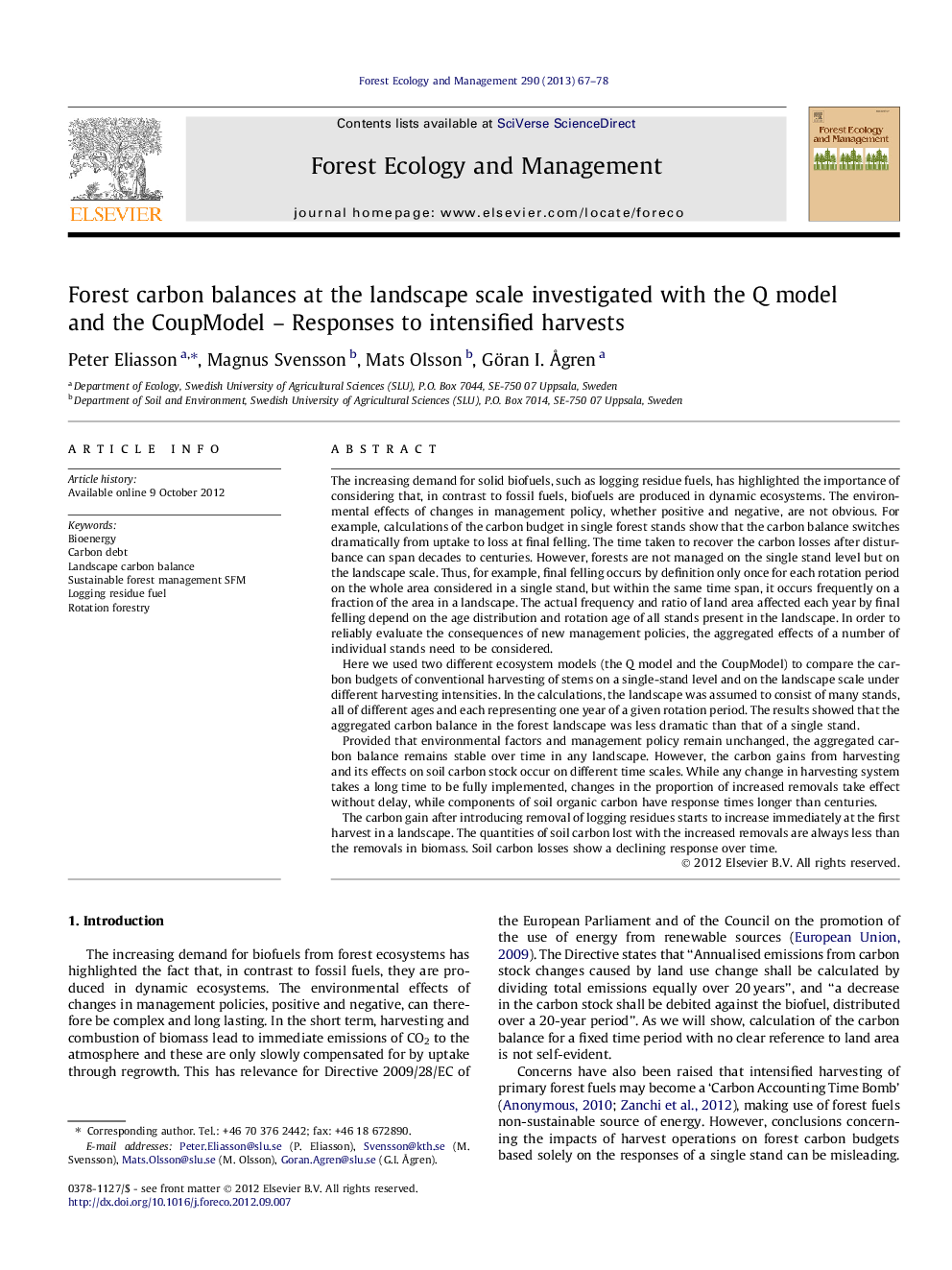| کد مقاله | کد نشریه | سال انتشار | مقاله انگلیسی | نسخه تمام متن |
|---|---|---|---|---|
| 87161 | 159235 | 2013 | 12 صفحه PDF | دانلود رایگان |

The increasing demand for solid biofuels, such as logging residue fuels, has highlighted the importance of considering that, in contrast to fossil fuels, biofuels are produced in dynamic ecosystems. The environmental effects of changes in management policy, whether positive and negative, are not obvious. For example, calculations of the carbon budget in single forest stands show that the carbon balance switches dramatically from uptake to loss at final felling. The time taken to recover the carbon losses after disturbance can span decades to centuries. However, forests are not managed on the single stand level but on the landscape scale. Thus, for example, final felling occurs by definition only once for each rotation period on the whole area considered in a single stand, but within the same time span, it occurs frequently on a fraction of the area in a landscape. The actual frequency and ratio of land area affected each year by final felling depend on the age distribution and rotation age of all stands present in the landscape. In order to reliably evaluate the consequences of new management policies, the aggregated effects of a number of individual stands need to be considered.Here we used two different ecosystem models (the Q model and the CoupModel) to compare the carbon budgets of conventional harvesting of stems on a single-stand level and on the landscape scale under different harvesting intensities. In the calculations, the landscape was assumed to consist of many stands, all of different ages and each representing one year of a given rotation period. The results showed that the aggregated carbon balance in the forest landscape was less dramatic than that of a single stand.Provided that environmental factors and management policy remain unchanged, the aggregated carbon balance remains stable over time in any landscape. However, the carbon gains from harvesting and its effects on soil carbon stock occur on different time scales. While any change in harvesting system takes a long time to be fully implemented, changes in the proportion of increased removals take effect without delay, while components of soil organic carbon have response times longer than centuries.The carbon gain after introducing removal of logging residues starts to increase immediately at the first harvest in a landscape. The quantities of soil carbon lost with the increased removals are always less than the removals in biomass. Soil carbon losses show a declining response over time.
► Carbon balance was simulated in forest landscapes with many stands of different ages.
► Reference stands in the landscapes were stem harvests only.
► Treatment stands had logging residues (or/and stumps) removed in addition to stems.
► Carbon harvested as a result of treatment increased linearly over time in landscapes.
► The loss of soil carbon in the landscapes decreased over time.
Journal: Forest Ecology and Management - Volume 290, 15 February 2013, Pages 67–78